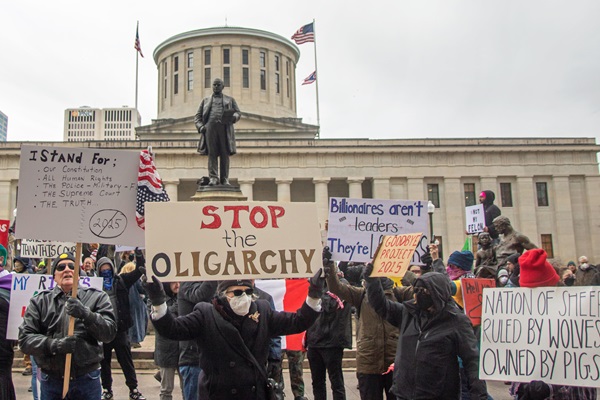.png)

Ajay Srivastava, founder of Global Trade Research Initiative, is an ex-Indian Trade Service officer with expertise in WTO and FTA negotiations.
July 8, 2025 at 6:10 AM IST
US President Donald Trump has extended the deadline for countries to finalise bilateral trade deals with the US from July 8 to July 31, giving a final three-week window before sweeping country-specific tariffs come into force on August 1.
The extension is part of a broader trade offensive launched on April 2, when Trump identified 57 countries for special tariffs unless they signed new deals aligning with US trade interests. So far, only the UK and Vietnam have complied. A temporary ceasefire deal with China is also in place.
Now, Trump is escalating the pressure. On July 7, he signed formal letters to 14 countries, outlining the tariffs they will face from August 1 if they fail to conclude a deal. The list includes:
- Japan, South Korea, Kazakhstan, Malaysia, Tunisia: 25% tariffs
- South Africa, Bosnia and Herzegovina: 30% tariffs
- 32% tariffs: Indonesia: 30% tariffs
- Bangladesh, Serbia: 35% tariffs
- Cambodia, Thailand: 36% tariffs
- Laos, Myanmar: 40% tariffs
More letters are expected this week. These warnings, described by the White House as “final notices,” leave countries with a stark choice: sign a deal on US terms or face punitive duties. The US administration believes the strategy will force hesitant partners like Japan, South Korea, and the EU back to the table. Early signs of nervous reaction in some capitals suggest the pressure may be working.
Trump has also issued a warning against retaliation—any country that raises its tariffs in response will see US duties increase even further.
From August 1, the US will apply country-specific tariffs on top of existing Most Favoured Nation rates, though not in addition to pre-existing sectoral duties such as those on steel, aluminum, autos, and auto parts.
For example, under Japan’s proposed 25% tariff:
| Product Category | Tariff Till July 31 | Tariff WEF Aug 1 |
| Pharma, Semiconductors, Books, Smartphones, Energy, Copper, etc. | 0% | 0% |
| Steel & Aluminum | 50% | 50% |
| Autos & Auto Parts | 25% | 25% |
| Imports not covered above | 10% | 25% |
The tariff hike is expected to disrupt trade flows, increase consumer prices in the US, and cause broader supply chain complications globally. US imports from China were down by 35% in May 2025 over previous period.
One-Sided Deals
Despite being presented as trade “agreements,” Trump’s deals do not meet WTO standards for Free Trade Agreements. Under WTO rules, FTAs require mutual tariff reductions on a substantial share of trade.
Under the Trump model, only the partner country lowers its MFN tariffs, while the US makes no reciprocal cuts. Trump lacks Fast Track Trade Authority from Congress to reduce MFN tariffs. Instead, he’s offering to roll back only the “Liberation Day” tariffs imposed in April under emergency powers—tariffs that a US federal court has already ruled unlawful. The case is under appeal, but the legal basis remains fragile.
For India, those April tariffs added a 26% surcharge on top of normal US tariffs. Even if a deal is struck, Indian exports may still face a minimum 10% additional levy, making it a pressured compromise, not a true partnership.
No Deal Is Ever Final
Trump’s unpredictability raises concerns that even signed deals may be revisited. Just last week, he threatened an additional 10% tariff on BRICS countries, including India, if they pursue what he calls “anti-American” policies.
This came after the BRICS Summit in Rio, where members condemned US unilateral tariffs and explored alternatives to the US dollar, including a common currency for trade. The group’s expansion to include Iran, Saudi Arabia, and the UAE has deepened fears in Washington of a multipolar shift in global trade leadership.
Trump’s warning makes it clear: any country seen as aligning with BRICS positions may face new tariffs, regardless of previous deals. The message—loyalty trumps legality.
Trump’s push to force countries to buy more from the U.S. ignores the realities of existing trade deals:
| Country | FTA Name | In Force Since | Tariff Coverage | 2024 Trade Balance |
| Japan | U.S.–Japan Trade Agreement | Jan 1, 2020 | Over 90% of U.S. farm products duty-free or low tariff | Exports: $79.7 B |
| Imports: $148.2 B | ||||
| Deficit: $68.5 B | ||||
| S. Korea | KORUS FTA | Mar 15, 2012 | Tariffs eliminated on ~95% of goods | Exports: $65.5 B |
| Imports: $131.5 B | ||||
| Deficit: $66.0 B | ||||
| Australia | AUSFTA | Jan 1, 2005 | 99% of U.S. goods tariff-free | Exports: $34.6 B |
| Imports: $16.7 B | ||||
| Surplus: $17.9 B |
Despite these agreements, the US runs persistent deficits with Japan and South Korea. Trump now wants countries not just to reduce tariffs, but to guarantee purchases of American agriculture, oil, gas, and aircraft. Even with Australia, where the US enjoys a sizeable trade surplus, Washington is demanding additional commitments, including beef imports.
Misdiagnosing the Deficit
Trump’s tariff push stems from the belief that America’s large trade deficit is due to foreign tariffs and unfair trade barriers. He argues that higher US tariffs will protect domestic industries and create jobs.
But trade analysts, including those at GTRI, argue that this is a misdiagnosis. The real cause lies in the US dollar’s status as the global reserve currency, which allows the US to run persistent trade deficits by printing dollars. This unearned dollar allows US to over spend, buy most startups and real estate abroad and run high trade deficits. High wages, outsourcing, and uncompetitive manufacturing in many sectors further compound the issue.
With the clock ticking, India is seen as a top candidate for a deal announcement in the coming days. According to sources, India has already submitted its final offer, and the next move lies with Washington. An announcement could come at any moment, possibly even via a late-night Truth Social post by Trump. India would like a joint statement but that would depend on Trump’s mood.
But New Delhi must tread carefully. With the US showing willingness to override agreements and impose unilateral conditions for example on BRICS members, India must weigh the strategic value of engagement against the risks of an imbalanced deal.
Trump’s model isn’t a Free Trade Agreement—it’s a YATRA: Yielding to American Tariff Retaliation Agreement.




